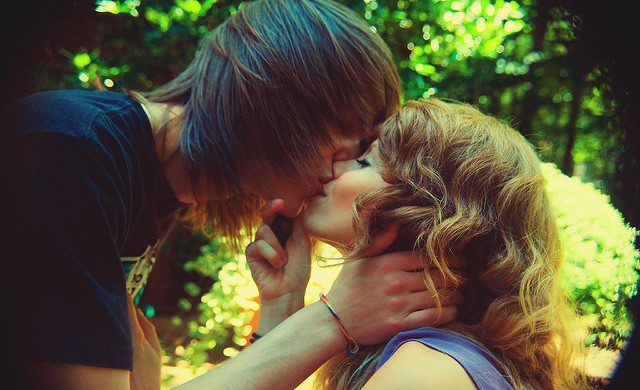The first date is an investment of the heart.
It is a daring reach into the unknown and unknowable world of another. It instantly tests our mettle—and then tests it again and again.
In any relationship that lasts more than one night, love comes and goes. It rolls through like a spring storm and changes like the weather. Love alternately breaks us apart and holds us together. Love is dynamic; it flows, and we need to be steadfast and quick to catch it. We have to hold our hearts open and discover ourselves as dynamic lovers.
Dynamic love opens us up, lightens us up, and wakes us up.
Here are the five elements of dynamic love:
Embracing Risk.
Attempting to reduce the volatility in a relationship divides many a couple. It forces us into marriage prematurely. We imagine that once we are married, the other person can’t leave. It has us ignore the inherent risk of spending time with another person—that they will grow to dislike and distrust us, or us them.
For a relationship to work, recognize and welcome risk. The risk is that the person you love most in the world may leave you for another or die. It is a real possibility that your relationship will change character so radically that you won’t even recognize yourself or your partner.
Enter into a relationship, not for the security of it, but to meet the insecure aspects of yourself and another. Expect them to be who they are this moment, not who they were yesterday, last week, or when they said, “I do.”
Sharing Attention.
Attention is something that we all want, need, and deserve. Most of us imagine that life would be better if we got more of it.
A relationship, at least if it is a decent one, splits our attention. It forces our attention onto another and away from ourselves. We are supposed to give our partner attention even when we don’t want to, or we imagine that we haven’t got enough attention to go around.
Connecting with another offers a “Robinson Crusoe moment.” Remember the book/movie where he is stranded on a desert island and discovers a footprint in the sand that isn’t his? A relationship is like that. It is often scary to share our attention, to think of another more than we do of ourselves, or love someone so much that we literally can’t live without them.
Discovering where our attention is focused makes it possible to balance our attention between ourselves and another, making certain that things are copacetic enough to share what we seek most: attention.
Trusting Genuinely.
Whether we know it or not, most of us use the word trust as a euphemism for control. We trust people to do what we want them to do, as a means to leverage them into doing it. We also make our trust contingent upon what they do or have done, imagining that someone can actually be trustworthy. This isn’t real trust, but instead an attempt to manipulate another.
Genuine trust requires a much larger focus and is a declaration—created as it is spoken. Saying, “I trust you,” doesn’t suggest that you need to be a particular way or do something special for me to trust you.
It is possible to trust often, but never make a habit out of it. Because when it becomes a habit, then it lacks the dynamic nature of genuine trust.
It’s natural to trust our partners one moment, and not trust them the next moment without any change in circumstances.
Trust is a unique and strong bond between people. It doesn’t fence a partner in, but instead, it frees them to do as they will within the “safety net” that trust creates each moment.
Noticing Moods.
Emotions are dramatic reactions to circumstances. Moods are much deeper than that. They rise up from the primal depths of our being and have nothing to do with the goings on around us.
Moods can ruin a perfectly fine relationship, especially when we attribute them to circumstances. We speak of being angry because we were cut off in traffic, or sad because our pet died.
But moods are deeper than circumstances, so they can’t be caused by them.
Getting to know someone includes the process of noticing their moods and our own. When we notice moods, we become familiar with our depths. When we attribute moods to circumstances, we remain shallow.
We aren’t in a bad mood because we got fired. We got fired, and we happen to be in a bad mood.
Discovering the nature of our partner’s moods aligns our depths. It leads to our relationship becoming deeper. Moods aren’t random; they are as predictable as a commuter train. And once we know that, we will not only have a sense of when our partner will need us most, but we will synchronize our moods naturally and attentively.
Dynamic loving.
Embracing risk, noticing how and where we focus our attention, discovering the power of declaring our trust and aligning our moods, all provide the medium for experiencing dynamic love.
Dynamic love offers quite a ride. It navigates the ups and downs, the quick turns, and the bumps that life offers. It inspires us to share a dynamic life together and to be more with another than we would ever be alone.
~
~
~
Author: Jerry Stocking
Image: Flickr/Ashley Harrigan, Rick&Brenda Beerhorst/Flickr
Editor: Travis May

 Share on bsky
Share on bsky





Read 0 comments and reply